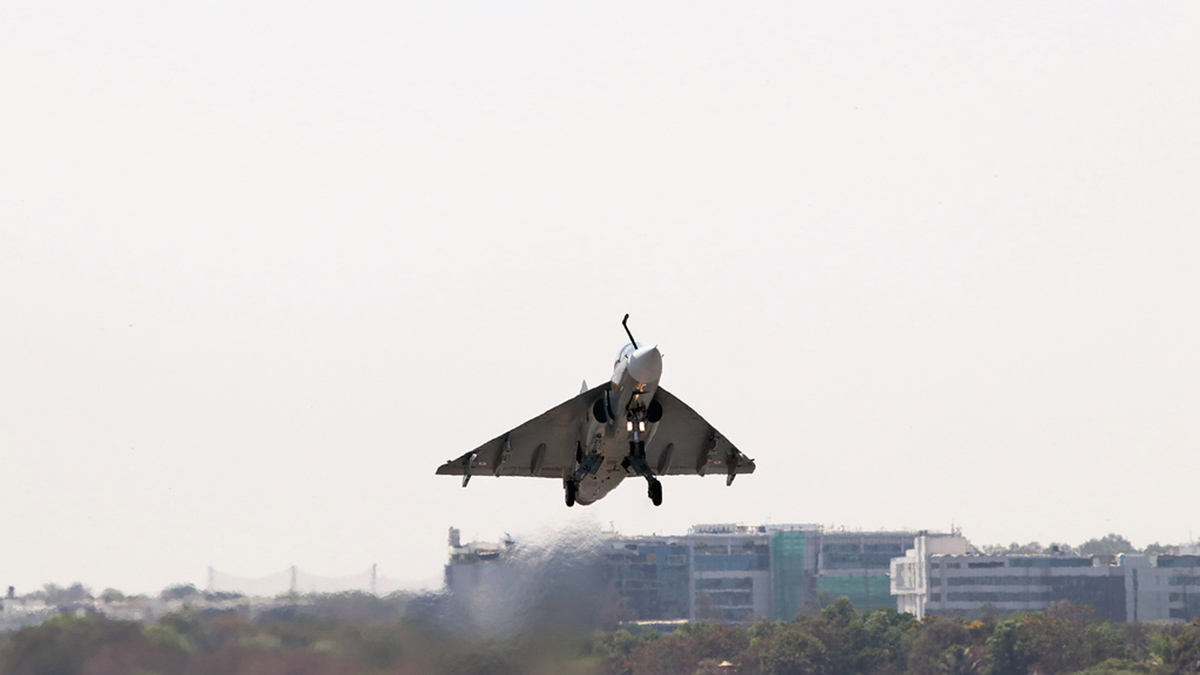As Rajnath Singh resumes his ministerial duties, his principal task is to meticulously oversee the Defence Research and Development Organisation (DRDO) and Hindustan Aeronautics Limited (HAL). Allocating substantial funds is one aspect; ensuring the punctual delivery of complex defence systems is quite another.
The acquisition of 97 Tejas Mark 1 aircraft, amounting to Rs 65,000 crore, is a priority, with inevitable budget overruns anticipated due to the intricate nature of domestic manufacturing. Striking this balance will need to be the focus of the new term.
The Grand Vision: Obtaining Aatmanirbharta
In the arena of global geopolitics, self-reliance is both a sword and a shield. For India, this ambition materialises in the quest to establish a robust indigenous defence industry. The recent induction of the Light Combat Helicopter (LCH), the K9 Vajra-T self-propelled howitzer, the Akash-NG surface-to-air missile system, and the state-of-the-art INS Vikrant aircraft carrier underscore India’s commitment to developing home-grown weapon systems.
In Singh’s new term, the focus will likely be on engines for SU-30MKI aircraft and the procurement of Close-In Weapon Systems (CIWS), High-Power Radars (HPR), and BrahMos missiles, which are expected to be finalised in the first quarter.
Tejas Fighter Aircraft: A Crucial Milestone
The Tejas fighter aircraft epitomises a cornerstone of India’s defence strategy. Delays in such projects could perpetuate dependence on foreign suppliers, thereby eroding the objective of self-reliance. Despite generous funding, there is no assurance that the government-owned HAL, which has seen a 1,300 per cent surge in its share price, can meet the stringent technological deadlines.
The Tejas programme acts as a technological crucible, driving advancements in avionics, materials science, and combat systems. Adhering to the LCA deadlines will test the efficacy of the Make in India initiative and bolster confidence among potential foreign buyers, though such interest has been scarce.
Impact Shorts
More ShortsEmpowering the Domestic Private Sector
Singh’s strategy of awarding larger contracts to domestic private sector entities is both pragmatic and visionary. It addresses the inefficiencies inherent in the public sector while providing private enterprises with the scale necessary to justify their investment. Companies such as Larsen & Toubro and Tata Advanced Systems have secured significant orders. Nonetheless, substantial defence orders are sporadic. No nation has developed a domestic defence industry without substantial orders from its own armed forces. India must focus on large-scale contracts that can stimulate ecosystems and attract future investments.
Leading in Explosives and Munitions Manufacturing
Indian firms are establishing a foothold in the global explosives and munitions market. Bharat Dynamics Limited and other companies have reached critical mass. Over the past two years, the Indian Army has halved its ammunition imports, saving approximately $2.2 billion. The corporatisation of Ordnance Factory Boards could further enhance their efficiency. India now manufactures a comprehensive range of explosives, necessitating continued nurturing. Recently, India secured a $250 million project from Saudi Arabia. India also supplied modular charge systems for the US Army’s 150-mm guns. Indian ammunition has found a market in Armenia, and Munitions India, a public sector company, is a significant supplier to Israel. Adani has established India’s largest private ammunition manufacturing facility in Kanpur.
Necessity of a Direct Credit Market
Creating a direct credit market for smaller players in defence manufacturing is vital for fostering innovation and competitiveness. Smaller firms often encounter substantial financial barriers, impeding their ability to invest in research, development, and production. Establishing a direct credit ecosystem would ensure a diverse and dynamic defence manufacturing sector, enhancing India’s overall defence preparedness and strategic autonomy.
Strategic Edge of Unique Weapons and Emerging Markets
The BrahMos missile, a unique collaboration between India and Russia, exemplifies strategic innovation that can distinguish India in the global arms market. Its supersonic speed and precision make it a formidable deterrent. Emerging markets, particularly in Africa, offer lucrative opportunities for India’s defence exports.
Also, weapons manufacturing also requires a clandestine element—industrial espionage. Nations rarely divulge their trade secrets in defence. China has mastered this approach. Whether India can replicate this, and crucially, whether it can evade repercussions, remains to be seen.
The writer is a senior journalist with expertise in defence. Views expressed in the above piece are personal and solely those of the author. They do not necessarily reflect Firstpost’s views.
)